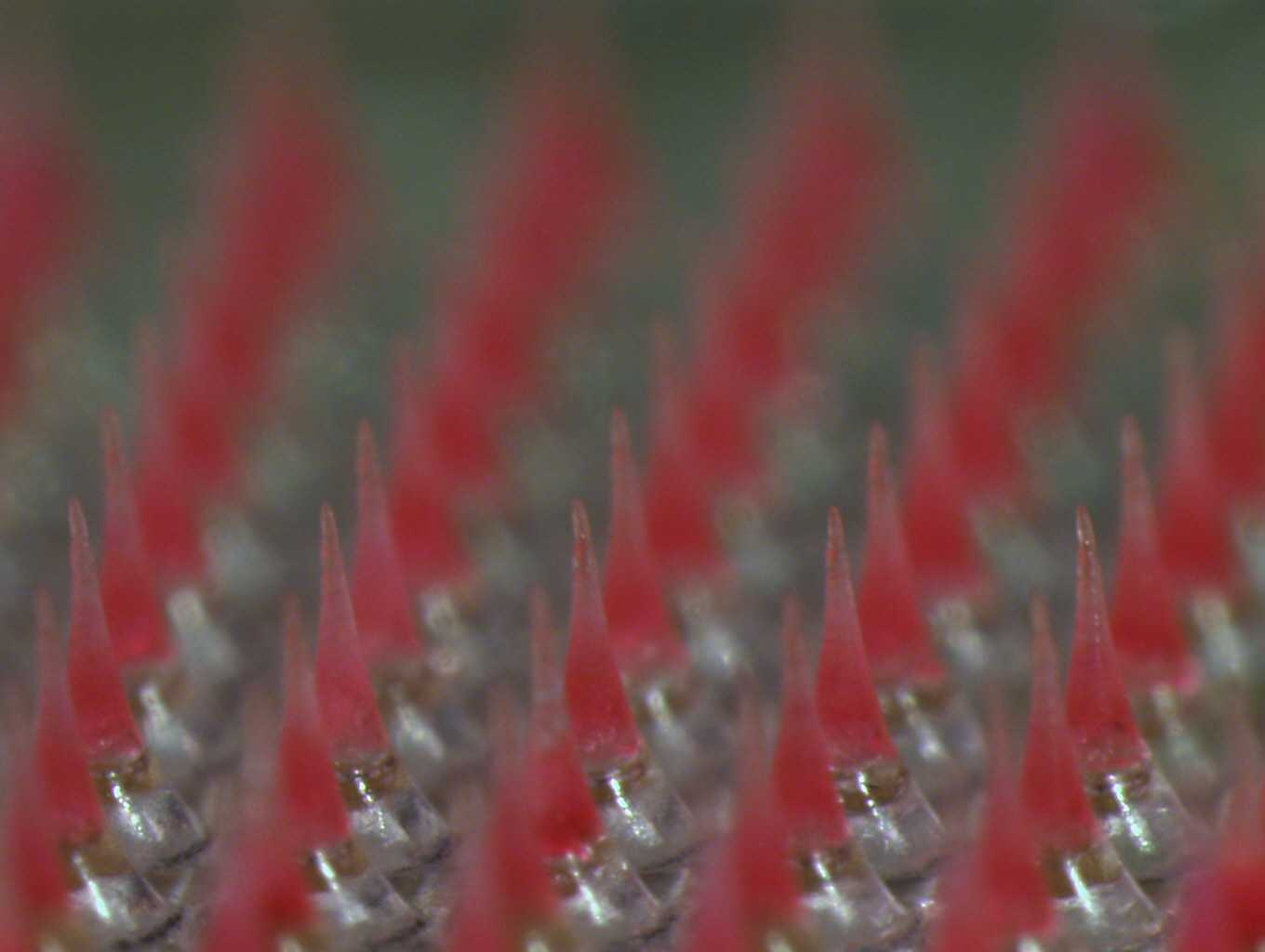 |
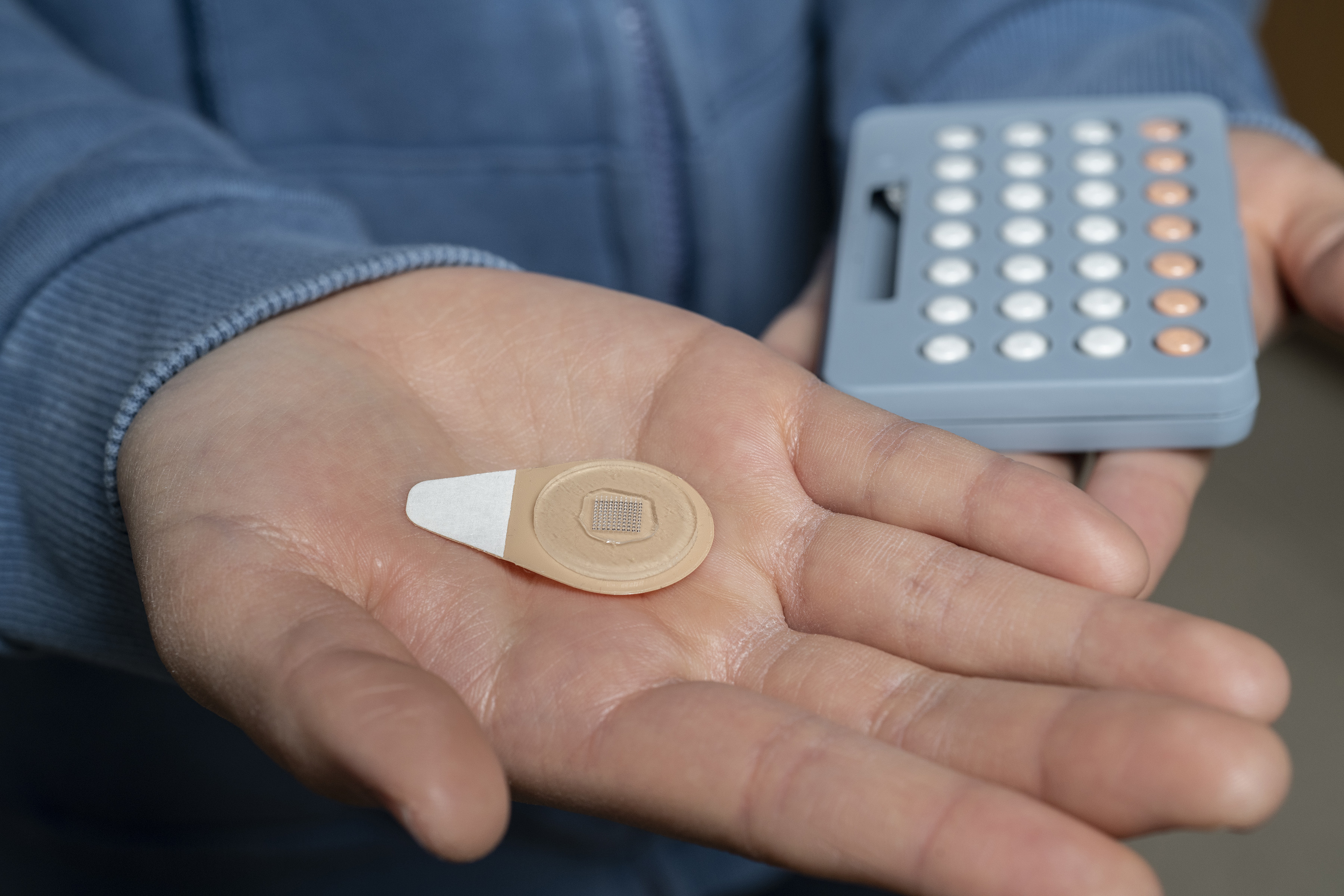 |
 |
| Array of microneedles for slow-release of contraceptive hormone (red dye is added for visualization). Each microneedle is 600 µm tall. (Credit: Wei Li, Georgia Tech) |
Microneedle patch for long-acting contraception shown with conventional contraceptive pills (Credit: Christopher Moore, Georgia Tech)
|
Mark Prausnitz, Ph.D., Georgia Tech Regents professor in the School of Chemical and Biomolecular Engineering, holds a microneedle vaccine patch containing needles that dissolve into the skin. (Credit: Christopher Moore, Georgia Tech) |
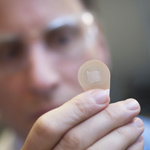 |
 |
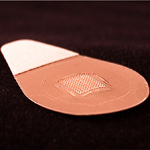 |
| Mark Prausnitz, Ph.D., Georgia Tech Regents professor in the School of Chemical and Biomolecular Engineering, holds a microneedle vaccine patch containing needles that dissolve into the skin. (Credit: Christopher Moore, Georgia Tech) |
This photograph shows how the microneedle vaccine patch was applied to study participants. To study the possibility that patches could be self-administered, some participants applied the patches to themselves. (Credit: Rob Felt, Georgia Tech) |
This close-up image shows the microneedle vaccine patch, which contains tiny needles that dissolve into the skin, carrying vaccine. A majority of study participants said they would prefer to receive the influenza vaccine using patches rather than traditional hypodermic needles. (Credit: Devin McAllister, Georgia Tech) |
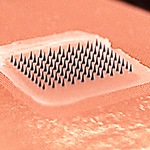 |
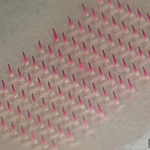 |
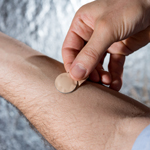 |
| This close-up image shows a microneedle array containing influenza vaccine. When pressed into the skin, the tiny needles dissolve, carrying vaccine into the skin. A majority of study participants said they would prefer to receive the influenza vaccine using patches rather than traditional hypodermic needles. (Credit: Devin McAllister, Georgia Tech) |
A dissolving microneedle patch encapsulating a model vaccine (colored pink). Each microneedle is 700 μm tall. (Credit: Devin McAllister, Georgia Tech) |
A microneedle patch being applied to the arm. (Credit: Rob Felt Georgia Tech) |
 |
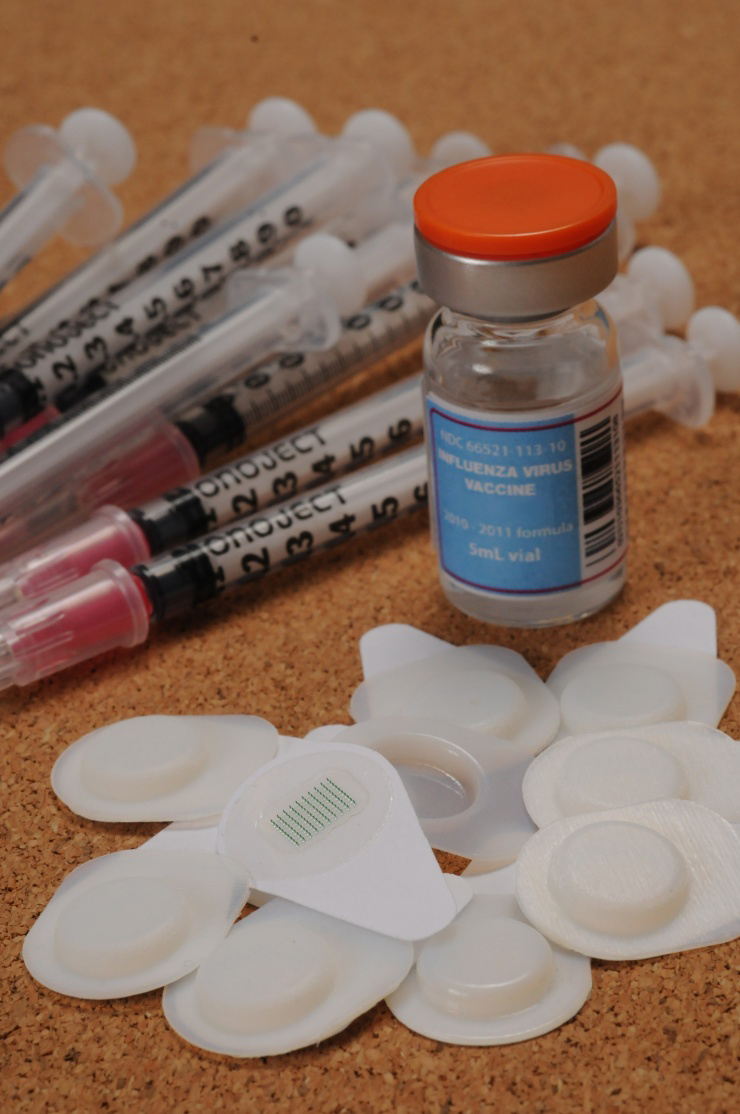 |
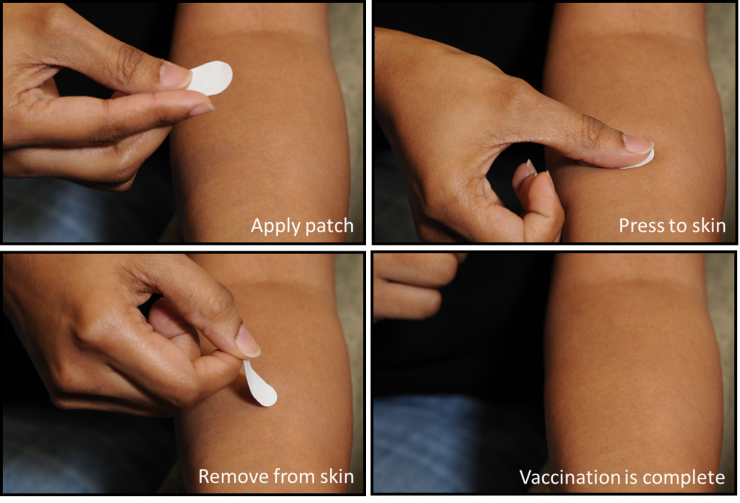 |
| Microneedle patches are shown in the foreground of this photograph, with a vial of vaccine and examples of traditional hypodermic needles shown in the background. (Credit: Gary Meek) |
Ten microneedle patches are shown with a ten-dose vial of influenza vaccine and ten hypodermic needles with syringes. (Credit: Gary Meek, Georgia Tech) |
This sequence of photographs shows how microneedle patches can be self-administered to a person’s forearm. (Credit: Gary Meek, Georgia Tech) |
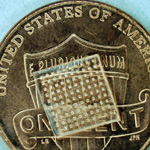 |
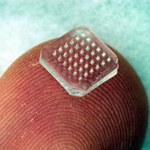 |
 |
| A patch containing 100 dissolving microneedles is shown on a U.S. penny coin. The microneedles dissolve wihin minutes after inserstion into skin to release encapsulated drug or vaccine. Each microneedle is 900 μm tall. (Credit: Jeong-Woo Lee, Georgia Tech) |
A patch containing 36 dissolving microneedles is shown on a fingertip. The microneedles dissolve wihin minutes after inserstion into skin to release encapsulated drug or vaccine. Each microneedle is 900 μm tall. (Credit: Jeong-Woo Lee, Georgia Tech) |
Microscope image shows dissolving microneedles encapsulating a pink dye used to simulate how a drug or vaccine would be incorporated into the needles. The microneedles dissolve wihin minutes after inserstion into skin to release encapsulated drug or vaccine. Each microneedle is 650 μm tall. (Credit: Sean Sullivan, Georgia Tech) |
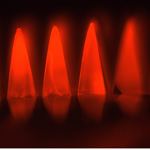 |
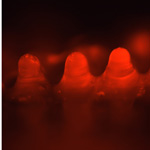 |
 |
| This is the first image in a sequence showing how microneedles dissolve in the skin. This image shows the microneedles before application to the skin. Each microneedle is 600 μm tall. (Credit: Sean Sullivan, Georgia Tech) |
This image shows microneedles that have partially dissolved one minute after being pressed into pig skin. (Credit: Sean Sullivan, Georgia Tech) |
This image shows microneedles that have almost completely dissolved five minutes after being pressed into pig skin. (Credit: Sean Sullivan, Georgia Tech) |
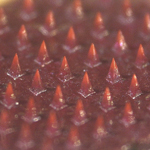 |
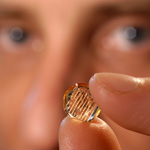 |
A section of a dissolving microneedle patch encapsulating a model vaccine (colored red). The microneedles dissolve within minutes after inserstion into skin to release encapsulated drug or vaccine. Each microneedle is 600 μm tall. (Credit: Jeong-Woo Lee, Georgia Tech)
|
A patch containing 100 polymer microneedles held between two fingers. (Credit: Gary Meek, Georgia Tech) |
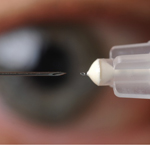 |
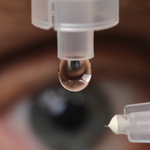 |
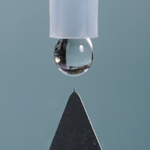 |
| A microneedle used to inject glaucoma medications into the eye is shown next to a conventional hypodermic needle. (Photo credit: Gary Meek, Georgia Tech). |
A microneedle used to inject glaucoma medications into the eye is shown next to a liquid drop from a conventional eye dropper. (Photo credit: Gary Meek, Georgia Tech). |
A solid microneedle coated with medication for delivery into the cornea is shown next to a liquid drop from a conventional eye dropper. (Photo credit: Gary Meek, Georgia Tech). |
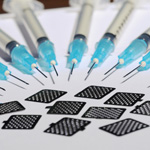 |
 |
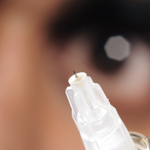 |
| A size comparison of a set of hypodermic needles of the kind now used to administer the measles vaccine, and an array of stainless steel microneedles that could be the basis for a patch that would be used to administer the vaccine. (Georgia Tech Photo: Gary Meek) |
Hollow microneedle used to inject therapeutics into specific locations in the eye. The technology could allow doctors to target drugs to locations in the eye that are now difficult to reach. (Credit: Gary Meek, Georgia Tech) |
Hollow microneedle used to inject therapeutics into specific locations in the eye. The technology could allow doctors to target drugs to locations in the eye that are now difficult to reach. (Credit: Gary Meek, Georgia Tech) |
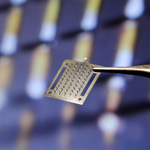 |
 |
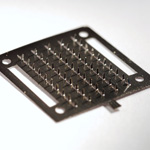 |
| A patch containing 50 metal microneedles. (Credit: Georgia Tech) |
A patch containing 50 metal microneedles. (Credit: Harvinder Gill, Georgia Tech) |
A patch containing 50 metal microneedles. (Credit: Georgia Tech) |
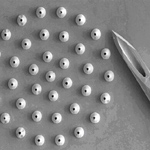 |
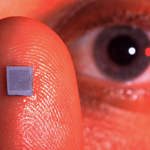 |
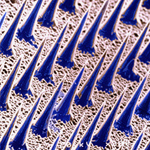 |
| Microscope image shows an array of hollow microneedles next to a hypodermic needle typical of those now used to inject drugs and vaccines. Each microneedle is 500 μm tall. (Credit: Shawn Davis, Georgia Tech) |
A patch containing 400 silicon microneedles shown on a fingertip. Each microneedle is 150 μm tall. (Credit: Stanley Leary, Georgia Tech) |
Silicon microneedles (with blue color added). Each microneedle is 150 μm tall. (Credit Sebastien Henry, Georgia Tech) |
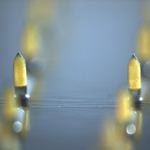 |
Metal microneedles coated with a model vaccine (colored yellow). The vaccine dissolves off the microneedles within minutes after insertion into the skin. Each microneedle is 750 μm tall. (Credit: Harvinder Gill, Georgia Tech) |